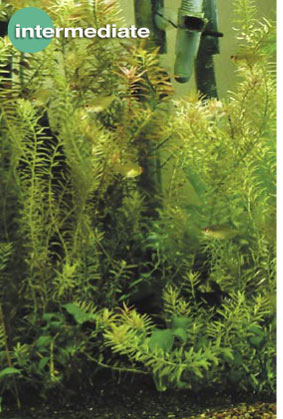 |
 |
|
Upgrading to a sump-based wet/dry filter or a custom aquarium filtration system may seem intimidating. Plumbing together all the different types of tubing, countless small pieces, and various types of connectors may seem overwhelming. However, creating a custom aquarium filtration system can be easy once you become familiar with the terminology. |
Essential Connectors
Plumbing connectors are divided into three groups: slip, insert (barbed), and threaded fittings. Slip fittings have a smooth interior and exterior and are used to permanently connect PVC tubing using
PVC cleaner and cement. Insert fittings have barbs on the outside to provide a watertight connection with flexible tubing. As their name implies, threaded fittings have threads and are often screwed directly on to the circulation pump to attach tubing or other connectors.
Optional Connectors
Magnum Quick-Disconnect Valves allow you to seal off hoses so you can clean your filter without spilling water.
Ball valves are placed in-line somewhere after the pump to give you control over pump flow rate without harming the pump, or to shut off or by-pass the flow of water when performing maintenance.
Connecting the Connectors
Aquarium plumbing systems are connected using either soft plumbing or hard plumbing methods.
Soft plumbing refers to a system of flexible vinyl tubing, clamps, and barbed fittings. These flexible setups are easy to install and are also easier to disconnect. Many aquarists prefer soft plumbing methods since they allow convenient maintenance and can be installed without elbows that can restrict flow rates.
Hard plumbing is a method that utilizes PVC pipes. The installation is either threaded together or permanently glued with slip fittings. Due to its rigid and permanent nature, they are time-consuming to disconnect. If your aquarium setup changes, or you need additional plumbing, the PVC must be cut apart and replaced. However, the rigidity of PVC provides greater stability necessary for larger-size tubing and is therefore commonly used in setups with high flow rates and high water pressure.
Putting it all together
To help simplify your aquarium plumbing endeavors, draw a diagram of your proposed system. Plan the route, where and how water will travel through your aquarium filtration system. Identify where aquarium water enters, the direction it travels as it moves between equipment and, finally, where the water returns into your aquarium. While charting this course, be mindful of the connection types of all aquarium equipment. This exercise will give you a very good understanding of all the plumbing parts you will need. All that's left is choosing between hard or soft plumbing methods.
Plumbing Terms
- Slip PVC solvent socket-type fittings
- NPT Umbrella term describing a standard pipe fitting (MPT or FPT)
- MPT Male pipe threads (Threads on the outside and smooth in the inside)
- FPT Female pipe threads (Threads on the inside and smooth on the outside)
- Insert Hose barb insert for flexible tubing
- ID Acronym for Inside Diameter
- OD Acronym for Outside Diameter
Question:
What is aquarium plumbing? |
Answer:
Plumbing refers to the parts used to transport water from your aquarium to your filtration unit(s), and then back to your aquarium. |
|